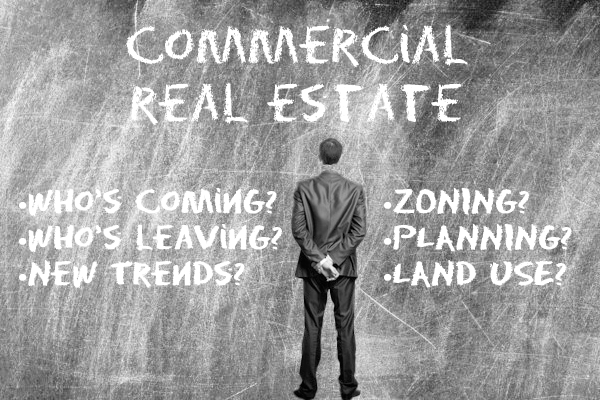|
RCBJ-Audible (Listen For Free)
|
Changes In Zoning, Financing, And Community Acceptance Can Yield Positive Change To Underutilized Commercial Properties
By Paul Adler, Esq.
 Downtowns across the Hudson Valley and suburban New York face a pressing challenge: how to keep our town centers vibrant and sustainable in the face of shifting demographics, evolving work patterns, and changing consumer behaviors. Empty office buildings and half-leased commercial spaces have become all too common sights, especially in the wake of the remote-work revolution. But within this challenge lies a powerful opportunity: converting office buildings into residential apartments.
Downtowns across the Hudson Valley and suburban New York face a pressing challenge: how to keep our town centers vibrant and sustainable in the face of shifting demographics, evolving work patterns, and changing consumer behaviors. Empty office buildings and half-leased commercial spaces have become all too common sights, especially in the wake of the remote-work revolution. But within this challenge lies a powerful opportunity: converting office buildings into residential apartments.
This idea is not radical—it’s practical. It responds to economic realities, embraces environmental sustainability, and offers a vision for more dynamic, walkable, and resilient downtowns. It’s time for planners, developers, and community leaders to give this concept serious consideration.
The Case for Conversion
The suburban office market has long been fragile, but post-pandemic, the cracks have widened. Many employers have adopted hybrid or fully remote work models, reducing demand for traditional office space. Meanwhile, housing affordability remains one of the region’s most pressing concerns. Converting underused office stock into residential units addresses both problems in one stroke.
By repurposing these buildings, towns can attract new residents to their centers. This influx of people living downtown is the lifeblood that neighborhood restaurants, local shops, and cultural venues desperately need. A café cannot survive on lunch-hour business alone, and a bookstore can’t thrive if foot traffic dries up at 5 p.m. Residents create a steady, reliable customer base that stabilizes fragile retail ecosystems and helps small businesses flourish.
Breathing New Life into Stale Stock
Many suburban office buildings, especially those built in the 1970s and 1980s, are outdated and unattractive to modern tenants. But these structures can be reborn. With thoughtful renovation, they can meet higher environmental standards, integrate energy-efficient systems, and provide comfortable, modern housing that reflects today’s lifestyle needs.
Some conversions may adopt a hybrid model—retail or commercial space on the ground floor with residential units above. Others may go fully residential. Either way, the result is a more productive use of real estate that no longer languishes in vacancy.
Expanding the Tax Base
When a building sits empty, it not only blights the landscape but also erodes a community’s tax base. Converting these properties into housing increases ratables, bringing new revenue streams for municipalities. That funding can support schools, infrastructure, and local services—further enhancing the attractiveness of the town center.
A revitalized downtown also strengthens property values in surrounding neighborhoods. The benefits ripple outward, far beyond the converted buildings themselves.
Walkability and Transportation Access
Another advantage is location. Most office buildings are already situated near public transportation hubs or within walkable distances to downtown services. This makes them natural candidates for adaptive reuse. Encouraging walkability reduces reliance on cars, cuts down on traffic congestion, and supports climate goals by lowering carbon emissions.
For residents, the lifestyle appeal is clear: walk to dinner, grab a coffee, attend a cultural event, and commute by train—all from a home in a vibrant downtown. This is particularly attractive to younger renters seeking affordability and lifestyle convenience, as well as to seniors and empty nesters who want accessibility without the burdens of homeownership.
Affordability and Accessibility
New construction can be prohibitively expensive, often pricing out first-time renters or buyers. By contrast, repurposed office buildings can provide more affordable entry points into the housing market. This opens opportunities for a broader demographic, from young professionals starting out to retirees looking to downsize.
Offering a range of housing options also creates healthier, more inclusive communities—places where diverse groups of residents can live, work, and socialize together.
A Sustainable Future
Adaptive reuse is inherently sustainable. Instead of tearing down old structures and starting from scratch, conversion preserves the embodied energy already invested in a building. It reduces waste, saves on materials, and minimizes environmental disruption.
By upgrading these buildings to greener standards—better insulation, improved HVAC systems, energy-efficient windows—we can significantly lower their carbon footprints. At the same time, we create modern, desirable housing that aligns with long-term environmental goals.
A Call to Action
Of course, this vision requires collaboration. Zoning codes may need adjustment to allow residential use in areas traditionally zoned for offices. Financing structures must be flexible enough to encourage adaptive reuse. Community leaders must engage residents in envisioning how their downtowns can evolve.
But the rewards are worth the effort. Converting offices into housing is not just a real estate strategy; it’s an investment in the future of our communities. It’s about rethinking how we use space, how we support local economies, and how we create sustainable, livable towns.
Rockland County and its neighboring suburbs stand at a crossroads. We can continue to watch empty buildings drag down our downtowns, or we can seize this moment to breathe new life into them. Let’s give this concept a chance—and in doing so, give our communities a brighter, more vibrant future.
Paul Adler, Esq., is Chief Strategy Officer at Rand Commercial; reach him at: paul.adler@randcommercial.com













